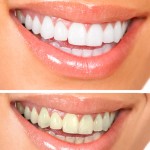
Tooth bleaching either carried out at home or in the dental clinic is an increasingly popular intervention. Concerns have been raised about the impact of bleaching on oral health and the potential impact on tooth structure but gingival irritation and tooth sensitivity are the most commonly reported side effects.
Changes in product formulation have been made to try and address sensitivity with inclusion of Potassium nitrate and sodium fluoride in some products. The aim of this review is to estimate of the efficacy of two desensitising agents, potassium nitrate and sodium fluoride, during bleaching treatment.
Methods
Searches were conducted in the Cochrane Center Register of Controlled Trials, MEDLINE (PubMed) and Embase. Randomised controlled trials (RCT) or controlled clinical trials (CCT) in patients undergoing tooth bleaching (at-home treatments and/or in-office procedures) with agents based on potassium nitrate and/or sodium fluoride intervention products were considered. The Cochrane risk of bias tool was used to assess study quality. Two reviewers undertook study selection, data abstraction and quality assessment processes independently.
Dichotomous data was summarized by odds ratio (OR) with 95% confidence interval (CI) and continuous data was summarized by mean difference (MD) or standardised mean difference (SMD) with 95% confidence interval (CI). The primary outcomes were percent of patients experiencing tooth sensitivity (POTS) and level of tooth sensitivity (LOTS) secondary outcomes were subjective shade guide unit difference (DSGU or SGU) and objective colour difference (ΔE).
Results
- 10 studies involving a total of 394 patients were included.
- 1 study was considered to be at low risk of bias, 7 at unclear risk and 2 at high risk.
- Meta-analysis (6 studies) found:-
- A significant reduction in POTS with desensitisers during bleaching. Odds ratio = 0.45 (95% CI: 0.28–0.73); I2 = 16% P = 0.29.
- A significant reduction in LOTS with desensitisers during bleaching. Pooled standard mean difference (SMD) = -0.47 (95% CI: -0.77 to -0.18) P = 0.13.
- The results of shade evaluation remained inconsistent by evaluating subjective shade guide unit difference (ΔSGU or SGU) and objective colour difference (ΔE).
Conclusions
The authors concluded: –
Potassium nitrate and/or sodium fluoride reduce tooth sensitivity while no consistent conclusion of tooth colour change was found by using those desensitizing agents.
Comments
Only a small number of studies were included in this review involving a limited number of patients (394). The authors highlight that there was also a considerable heterogeneity in the concentration and delivery approach for potassium nitrate and sodium fluoride as well as the bleaching agent. There was also variation in the follow up periods and in the quality of outcome reporting. These variations and the limited amount of data available means that the results should be interpreted with caution.
Links
Wang Y, Gao J, Jiang T, Liang S, Zhou Y, Matis BA. Evaluation of the efficacy of potassium nitrate and sodium fluoride as desensitizing agents during tooth bleaching treatment-A systematic review and meta-analysis. J Dent. 2015 Aug;43(8):913-23. doi: 10.1016/j.jdent.2015.03.015. Epub 2015 Apr 22. Review. PubMed PMID: 25913140.

Desensitising agents use during tooth bleaching reduced sensitivity http://t.co/ubiYT7d8hZ
Using desensitising agents during tooth bleaching reduced sensitivity http://t.co/ubiYT7d8hZ
@TheDentalElf isn’t that axiomatic?
Tooth bleaching sensitivity reduced with desensitising agent use http://t.co/ubiYT7d8hZ
Desensitising agent use during tooth bleaching reduced sensitivity http://t.co/ubiYT7d8hZ
Don’t miss – Desensitising agents use during tooth bleaching http://t.co/ubiYT7d8hZ